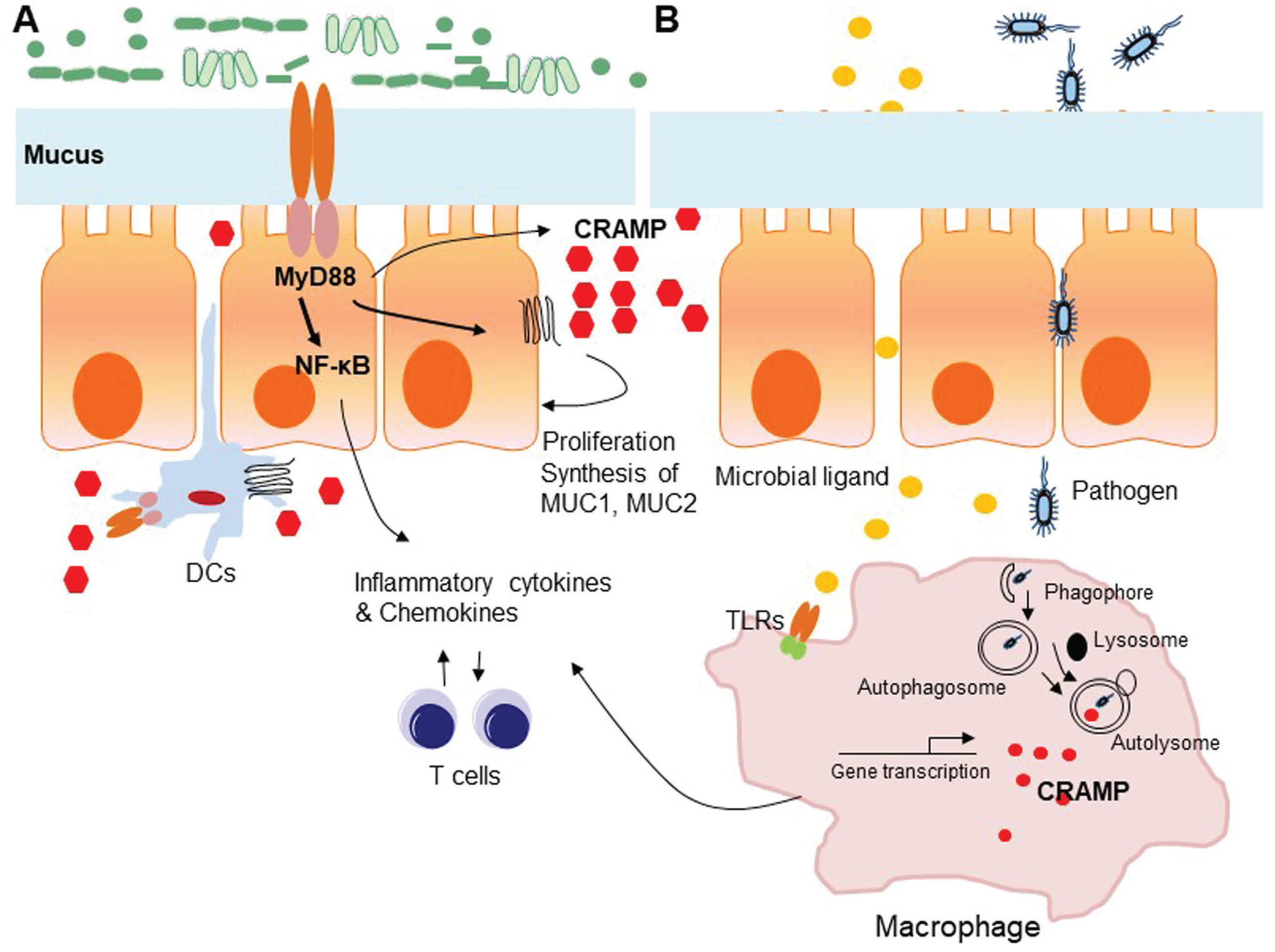FIG. 1:

Contribution of CRAMP to colon epithelial barrier integrity. A. The contribution of CRAMP to colon crypt structure and mucus layer integrity–Colon mucosal barrier consists of epithelial and immune cells, which partner with resident microbiota to form a barrier fending off harmful substances. Epithelial cell–derived CRAMP is detectable in cells located on the mucosal surface and in upper crypts, with little or no expression seen within the deeper colon crypts. CRAMP stimulates the proliferation and differentiation of colon epithelial cells through Fpr2 espressed by epithelial cells. CRAMP also directly stimulates mucus synthesis through up-regulation of MUC1 and MUC2 and MAP kinase activation in colon epithelial cells. B. The contribution of CRAMP to the antimicrobicidal function of macrophages–resident macrophages in colon mucosa patrol and moniter pathogen invaders in the mucosal barrier. Upon stimulation by bacteria and their products, macrophages increase CRAMP production, which directly or in cooperation with autophagy kill and clear intracellular bacteria.
